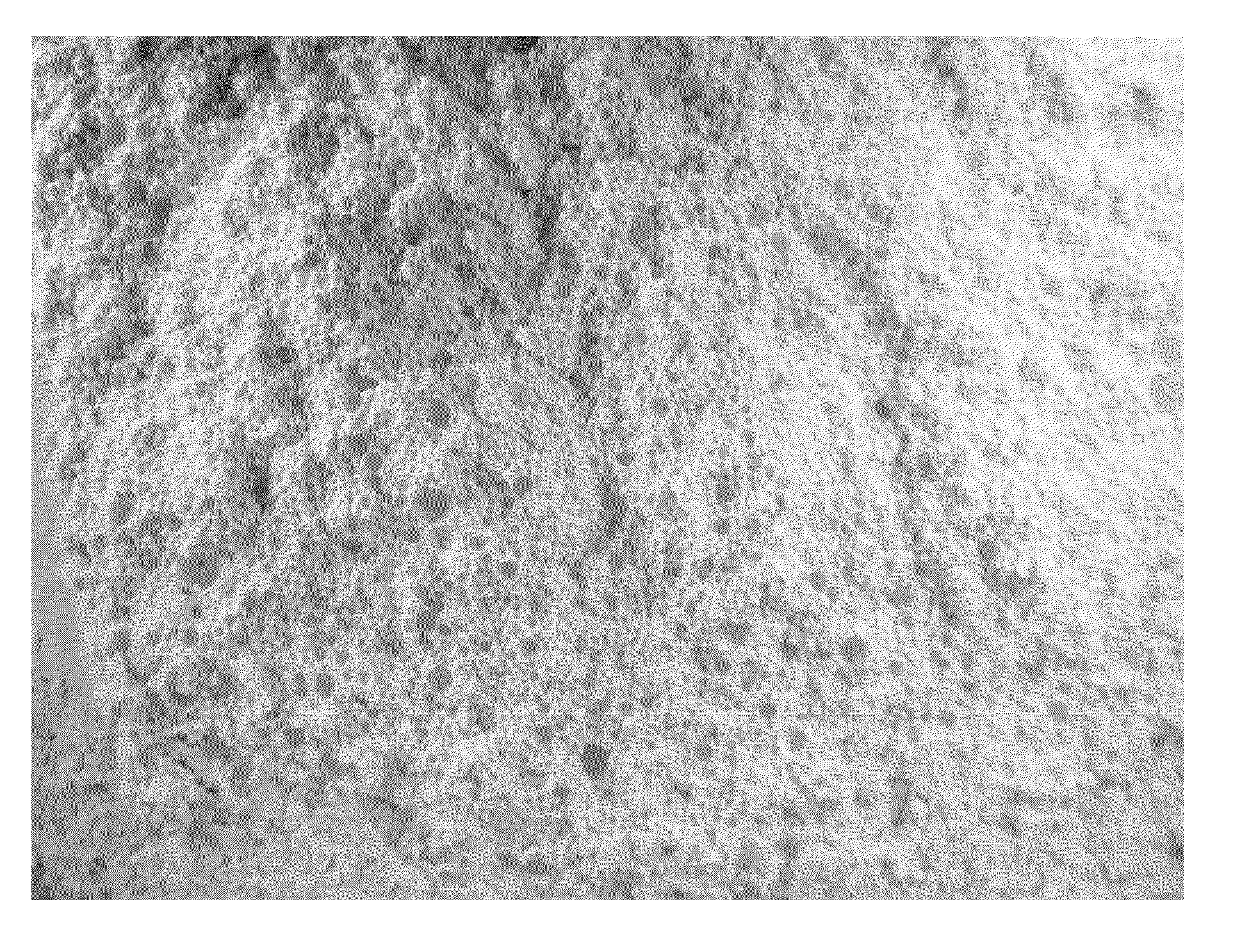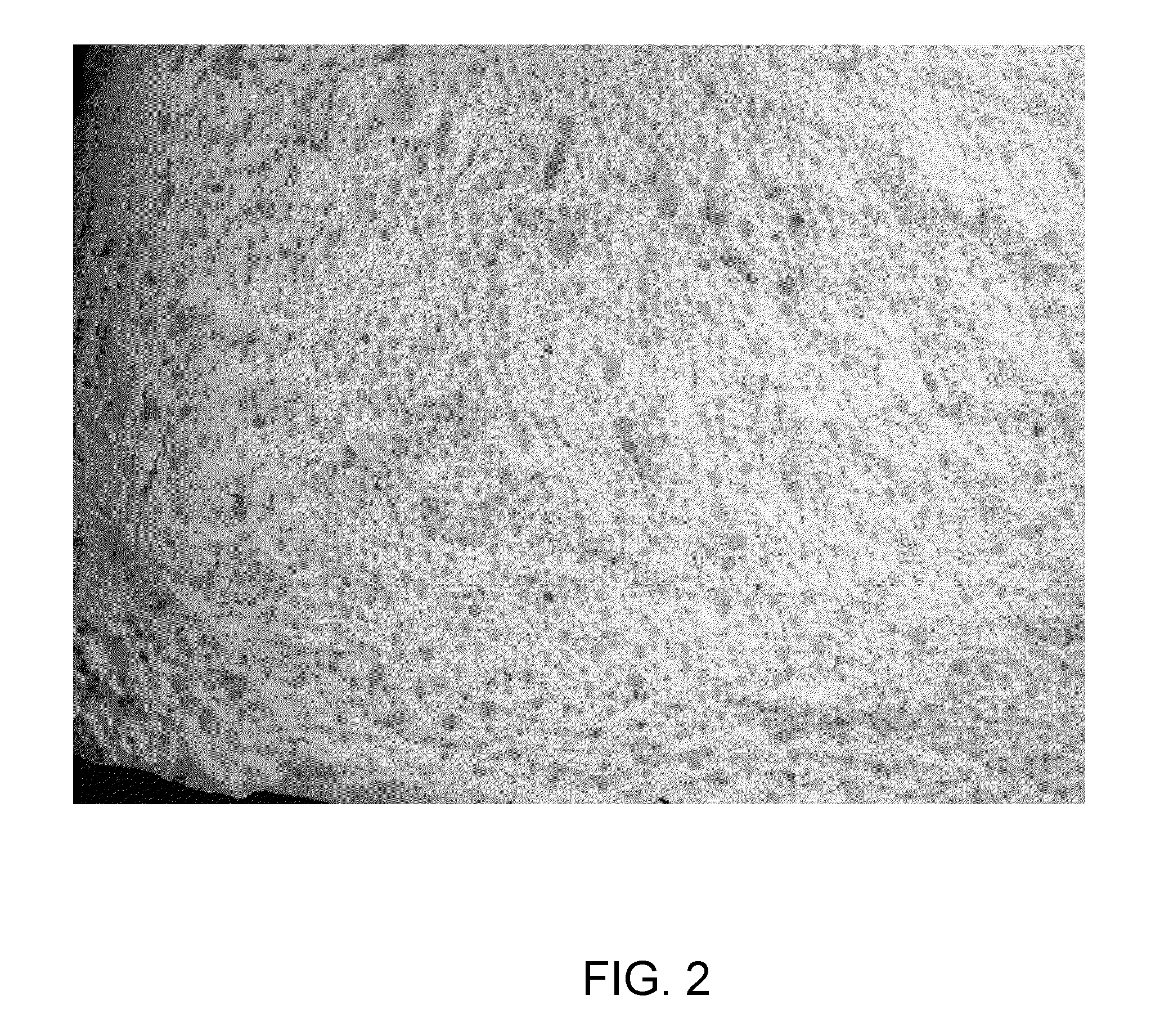Additives in gypsum panels and adjusting their proportions
a technology of additives and gypsum, which is applied in the field of gypsum products, can solve the problems of occupying a large space to stack and store wallboard, affecting the quality of gypsum, and reducing the effect of gypsum slurry set retardation, and achieving cost-effectiveness. , the effect of reducing the effect of water
- Summary
- Abstract
- Description
- Claims
- Application Information
AI Technical Summary
Benefits of technology
Problems solved by technology
Method used
Image
Examples
example 1
Synthesis of Polycondensation component
Example 1.1
[0143]A reactor equipped with a stirrer and a heating mantle is filled with 600 parts of poly(ethyleneoxide) monophenylether (average molecular weight 5000 g / mol), 47.2 parts of concentrated methane sulfonic acid, 12 parts of water, 110 parts of α-phenyl-ω-hydroxypoly(oxy-1,2-ethanediyl) phosphate (average molecular weight 368 g / mol) and 14.7 parts of paraformaldehyde. This reaction mixture is stirred at 115° C. for 3 hours. After cooling, 830 parts of water are added the reaction mixture is neutralized with 50% sodium hydroxide solution to a pH value of 6.5 to 7. The resin is a light yellow colored, clear and aqueous polymer solution with a solid concentration of 40% by weight. To the stirred solution (500 rpm) of the polymeric dispersant the antifoaming agent and the surfactant are added at ambient temperature (25° C.). The amounts of the materials are shown in Table 1 and are in percent by weight of the solution.
example 1.2
[0144]A reactor equipped with a stirrer and a heating mantle is filled with 26 parts of polyphosphoric acid and heated to 90° C. Within 15 min 44.2 parts of 2-phenoxyethanol are charged into the reactor. After 1 hour, 400 parts of poly(ethyleneoxide) monophenylether (average molecular weight 5000 g / mol), 31.4 parts of concentrated methane sulfonic acid, 20 parts of water and 12.6 parts of paraformaldehyde are added. This reaction mixture is stirred at 105° C. for 6 hours. After cooling, 550 parts of water are added and the reaction mixture is neutralized with 50% sodium hydroxide solution to a pH value of 6.5 to 7. The resin is a light brown colored, clear and aqueous polymer solution with a solid concentration of 40% by weight. To the stirred solution (500 rpm) of the polymeric dispersant the antifoaming agent and the surfactant are added at ambient temperature (25° C.). The amounts of the materials shown in Table 1 are in percent by weight of the solution.
example 1.3
[0145]A reactor equipped with a stirrer and a heating mantle is filled with 51.6 parts of polyphosphoric acid and heated to 90° C. Within 15 min 90 parts of 2-phenoxyethanol are charged into the reactor. After 1 hour, 322 parts of poly(ethyleneoxide) monophenylether (average molecular weight 5000 g / mol), 300 parts of poly(ethyleneoxide) monophenylether (average molecular weight 2000 g / mol), 42.1 parts of concentrated methane sulfonic acid, 16.8 parts of water and 28.5 parts of paraformaldehyde are added. This reaction mixture is stirred at 105° C. for 6 hours. After cooling, 800 parts of water are added and the reaction mixture is neutralized with 50% sodium hydroxide solution to a pH value of 6.5 to 7. The resin is a light brown colored, clear and aqueous polymer solution with a solid concentration of 40% by weight. To the stirred solution (500 rpm) of the polymeric dispersant the antifoaming agent and the surfactant are added at ambient temperature (25° C.). The amounts of the mat...
PUM
| Property | Measurement | Unit |
|---|---|---|
| mol % | aaaaa | aaaaa |
| mol % | aaaaa | aaaaa |
| molar ratio | aaaaa | aaaaa |
Abstract
Description
Claims
Application Information
 Login to View More
Login to View More - R&D
- Intellectual Property
- Life Sciences
- Materials
- Tech Scout
- Unparalleled Data Quality
- Higher Quality Content
- 60% Fewer Hallucinations
Browse by: Latest US Patents, China's latest patents, Technical Efficacy Thesaurus, Application Domain, Technology Topic, Popular Technical Reports.
© 2025 PatSnap. All rights reserved.Legal|Privacy policy|Modern Slavery Act Transparency Statement|Sitemap|About US| Contact US: help@patsnap.com



